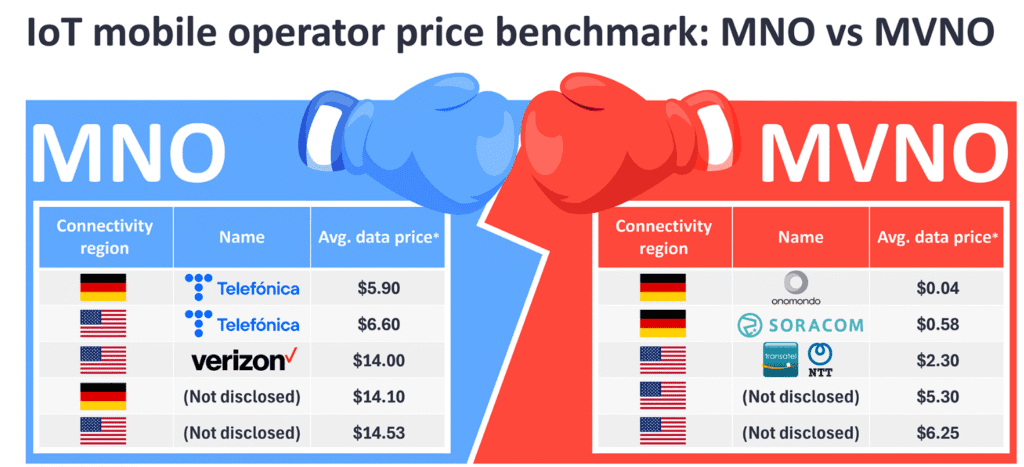You’ve just landed in Seoul, the heart of the world’s most hyper-connected nation. The airport Wi-Fi is blazing fast, and you feel ready to conquer the city. Your next critical mission: Getting your phone to work.
What you want is simple: affordable, reliable data from the moment you land. What you find is a confusing maze of options: eSIM vs. Physical SIM, MNO vs. MVNO, prepaid vs. post-paid.
This decision is not about speed; it’s about access. Choosing the wrong Korean SIM Card Guide won’t just cost you a few dollars; it will lock you out of Korean society, preventing you from using essential apps like Coupang, Baemin, and Kakao T due to a fatal flaw in the system known as ‘Bon-in-injeung’ (본인인증, User Authentication).
As a U.S. MBA with 11+ years in global trade and administrative consulting (JS Network), I’ve guided hundreds of expats, students, and corporate assignees through this exact technical and administrative nightmare. Having traveled to 80+ countries, I can tell you that Korea’s system is uniquely complex. This 5,000-word expert guide is the only resource you need to avoid the ‘Connectivity Trap’ and choose the correct option based on your exact stay duration—short-term tourist or long-term resident.
Part 1: The Short-Term Tourist Strategy (Under 90 Days)
If you are in Korea on a tourist visa or a short stay, your priority is low-cost, immediate data. This is where the popular eSIM option comes into play.
1. The “Data-Only” eSIM Trap: The Fastest Path to Digital Isolation
The vast majority of convenient, pre-purchased travel eSIMs (Airalo, Nomad, etc.) are Data-Only. You can install them instantly and get excellent internet service from an international provider.
The Critical Loss (손해): A data-only eSIM provides NO KOREAN PHONE NUMBER (010-XXXX-XXXX). Without a Korean number linked to a domestic carrier, you are instantly blocked from:
- Using local banking apps.
- Creating an account on Coupang or Gmarket.
- Booking KTX, SRT, or high-speed intercity buses online.
- Calling for basic local services, as many hotlines do not accept international calls.
You have a functioning phone, but you are a digital ghost—you cannot interact with essential, everyday Korean services. This is the single biggest mistake tourists make.
2. The “Prepaid USIM” and “Pre-set eSIM” Options: The Commission Trap
This is the classic physical SIM card you buy at the airport (KT, SKT). These often do come with a Korean phone number and are a better choice than a data-only eSIM.
The Trap: These are sold at a significant premium due to commissions and airport rental fees. You are paying for convenience. Furthermore, as you noted, these plans often involve complex international roaming/resale agreements (커미션). They are designed to expire, and attempting to extend them or move the number (MNP) into a long-term plan is often difficult or impossible due to the initial short-term tourist contract status.

3. The Technical Failure: The “Band” Compatibility Loss
A high-level technical detail few people check: is your phone compatible with the specific frequencies (Bands) used by Korean carriers?
- Korean 5G/LTE Focus Bands: N78 (3.5GHz 5G), Band 3 (1.8GHz LTE), Band 8 (900MHz LTE).
- The Problem: Older devices or phones purchased from specific regional carriers (e.g., North American CDMA models, some European budget models) may not support Korea’s primary bands.
The Loss: You pay for a premium 5G plan, but your phone can only connect to an older 4G or 3G signal. Your connection is slow, weak in buildings (like the Seoul subway system), and unreliable. Checking your phone’s band compatibility against the MNO’s technical specs is a necessary pre-flight step that almost everyone skips.
Part 2: The Long-Term Resident Strategy (90+ Days)
If you are a student, long-term worker (E-7 visa), or spouse (F-series visa), your goal is radically different. You need a post-paid (후불) plan linked to your Alien Registration Card (ARC) that grants you the full power of ‘Bon-in-injeung’.
The Two Pillars: MNO (The Giants) vs. MVNO (The Smart Choice)
You have two choices for a long-term plan:
- MNO (Mobile Network Operator): SKT, KT, LG U+. They own the physical towers.
- MVNO (Mobile Virtual Network Operator): Al-tteul Phone (알뜰폰). They rent the MNO networks.
A. The MNO Trap: High Cost and Bureaucracy
The “Big 3” offer the highest brand trust, but they are expensive and bureaucratically complex for foreigners.
- Cost Loss: They demand long-term, 2-year contracts (약정) to receive a discount, often leading to significantly higher monthly bills than an MVNO for the same data volume.
- Administrative Loss: They often require your ARC (which can take weeks to get), a Korean bank account, and sometimes even proof of employment or financial stability. This is the Catch-22: You need a phone to open a bank account, but you need the bank details to open the phone contract.
B. The MVNO Solution: Identical Quality, Half the Price
MVNOs (e.g., Hello Mobile, T-Plus) are the intelligent choice for long-term expats who want maximum value. They use the exact same SKT, KT, or LG U+ network, providing identical speed and coverage, but their plans are often 30% to 50% cheaper and usually no-contract (무약정).
The MVNO Trap (The Administrative Barrier): The reason MVNOs are so cheap is that they minimize their physical presence. Most enrollment is done online. This forces the foreign user back into the ‘Bon-in-injeung’ maze. You need to use a Korean credit card, certificate, or other method to prove your identity—the very thing you are trying to acquire the phone number for!
This is the precise ‘Gray Area’ where JS Network provides high-value support. We know the few MVNOs that offer more flexible enrollment options for new residents without a Korean credit history.

Part 3: The MNP vs. USIM Change Dilemma (Existing Residents)
Once you have an ARC and a post-paid plan, you might want to switch to a cheaper MVNO. This involves either getting a new SIM (USIM Change) or Mobile Number Portability (MNP, 번호이동).
MNP (Mobile Number Portability): The Alignment Trap
MNP is the process of taking your existing Korean phone number (e.g., the one linked to your bank account) and moving it to a new carrier (e.g., switching from KT MNO to an LG U+ MVNO).
The Trap: The failure rate for foreigners attempting MNP is astronomically high. The reason is a simple administrative failure: Your name and ARC number must be 100% identical across the two carriers. If your name is “COLIN J. SMITH” on your old carrier but “SMITH COLIN J” on your new application, the transfer will fail. This results in loss of service for days and a massive headache to fix, as you must coordinate between two unhelpful Korean customer service centers.
eSIM for MNP: The “Dual SIM” Advantage for Tech-Savvy Expats
For long-term residents with modern phones (dual-SIM capable), the eSIM is an excellent MNP option. You can move your existing number onto an eSIM profile on your phone, keeping your physical SIM slot free for temporary travel or work. This is a technical convenience, but it does not solve the administrative MNP alignment trap above.

Part 4: The Expert Solution — Why You Need an Administrative Proxy
The Korean telecom landscape is a minefield of technical, administrative, and bureaucratic traps. Whether you are a tourist trying to use Coupang or a resident trying to get a cheap, legal MVNO plan, the system is designed to favor local users with existing credit history and verification methods.
Why You Must Avoid the Loss: The True Cost of Failure
The true cost of choosing the wrong plan or failing at MNP is not the price of the SIM card. It is the loss of days spent at Immigration or telecom offices, the loss of security from using a data-only phone, and the loss of convenience that makes Korean life so enjoyable.
JS Network: Your Administrative Proxy for Connectivity (EEAT Credibility)
I am not affiliated with any specific telecom company. My expertise is in solving the administrative and technical problems that arise at the intersection of foreign identity and Korean bureaucracy. Our service, Connectivity Concierge, is designed to prevent all the losses described above.
- Short-Term (Tourist) Solution: We only recommend/source eSIMs or USIMs that include a Korean phone number (not data-only), ensuring immediate ‘Bon-in-injeung’ functionality. We also check your phone’s Band Compatibility before you fly.
- Long-Term (Resident) Solution: We act as your Administrative Proxy. We leverage our local knowledge to bypass the online MVNO barrier, handle the precise MNP name alignment to prevent failure, and ensure your new post-paid number is perfectly integrated with your ARC for all future banking and governmental tasks.
- B2B Solutions: For corporate assignees, we provide a full-spectrum solution for setting up corporate or personal post-paid plans with minimal documentation, ensuring your team is fully operational from day one.

Conclusion: Don’t Just Buy a SIM. Buy a Seamless Korean Life.
The decision you make at the airport is the foundation of your time in Korea. Don’t let a technical detail sabotage your experience. You are here to study, work, or explore—not to spend hours on the phone with a customer service agent who doesn’t speak your language.
Secure your connectivity, secure your identity, and secure your access to all the wonderful services Korea has to offer. Partner with an expert who understands the system from the inside out.
JS Network: Solving Korea’s ‘Expat Nightmares’
Colin (Founder) | U.S. MBA | 11+ Yrs Global Experience
My Expertise:
• Expat ‘Nightmare’ Solutions (Visa, Housing, Banking)
• Global Trade & K-Product Sourcing (B2B/B2C)
• Premium Concierge & Travel Support
Contact Now:
📧 [email protected]
📱 Chat on WhatsApp | Chat on KakaoTalk
We respond quickly to all inquiries, but for 24/7 “URGENT” assistance (like a lost ARC or visa issue), please use Kakao/WhatsApp.
(All services are provided in conjunction with appropriate affiliated professionals (lawyers, administrative agents, judicial scriveners, etc.))
© JS Network Co., Ltd. | Expat ‘Nightmare’ Solutions 🌏 www.jsnetwork.co.kr


